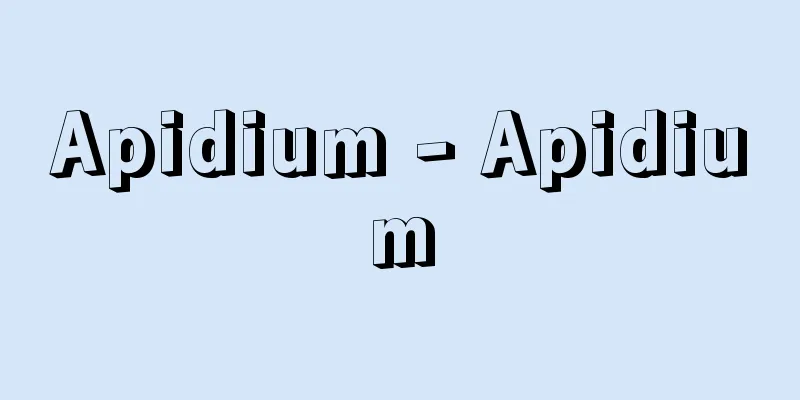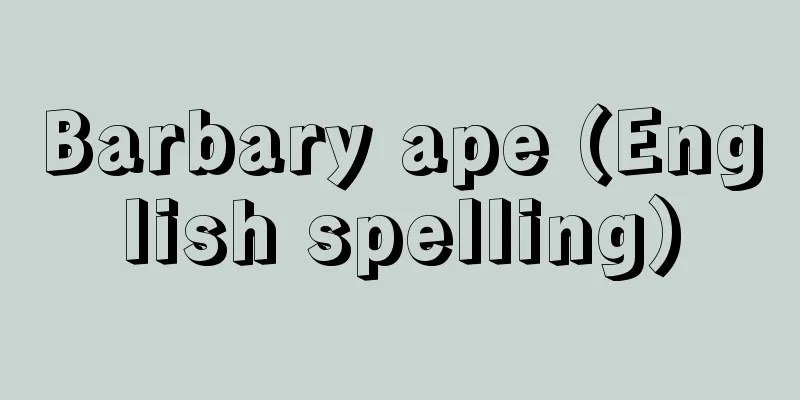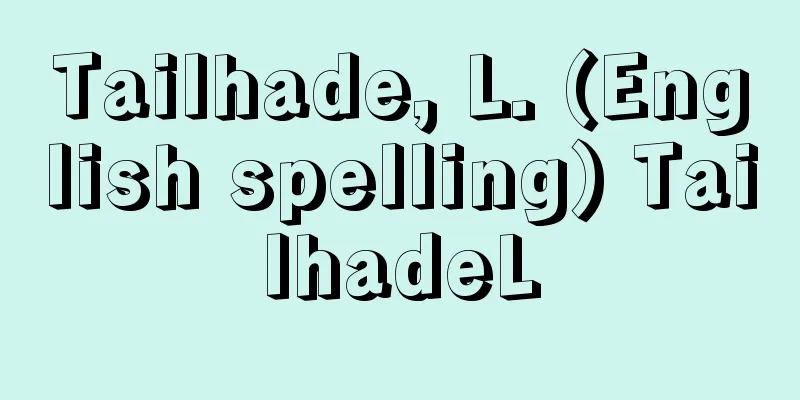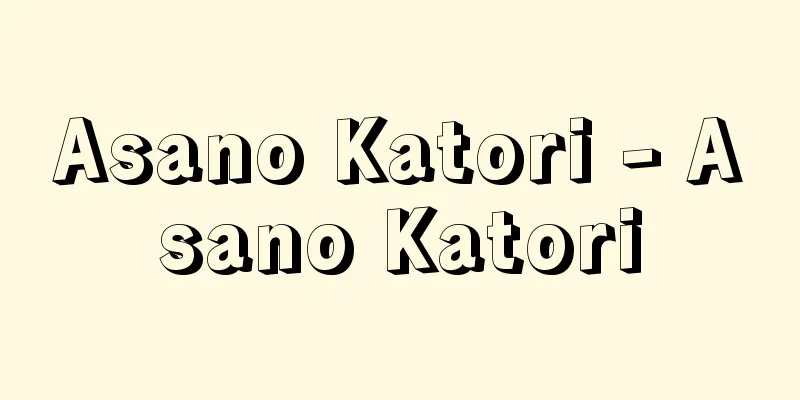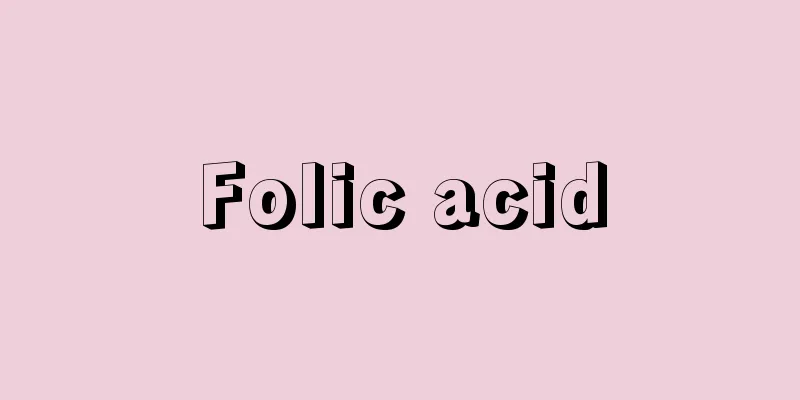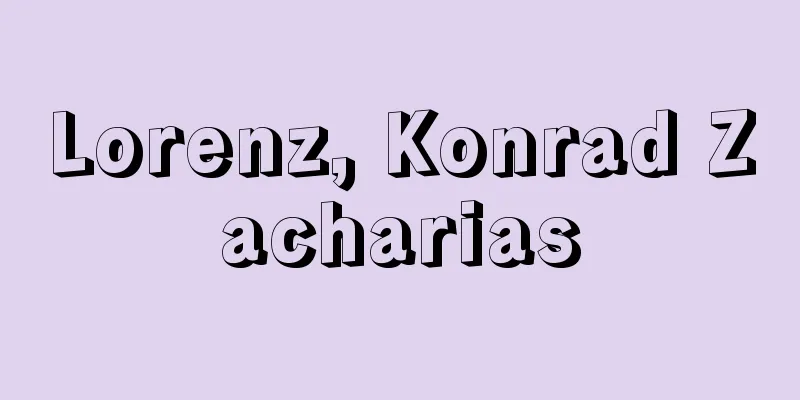High blood pressure

|
What kind of disease is it? ●Main symptoms and history Blood pressure is the pressure exerted by blood pumped from the heart against the inner walls of the arteries. When this pressure on the blood vessels continues to be stronger than a certain level, it is called high blood pressure. Even if your blood pressure happens to be high, it is still considered high blood pressure, but if it is only temporary, it is not high blood pressure. The heart pumps blood by repeatedly contracting and expanding, so blood pressure rises and falls accordingly. The value when blood pressure is at its highest due to the contraction of the heart is called "systolic blood pressure (maximum blood pressure)," and the value when blood pressure is at its lowest due to the expansion of the heart is called "diastolic blood pressure (minimum blood pressure)." High blood pressure is diagnosed when the systolic blood pressure is 140mmHg or higher, or the diastolic blood pressure is 90mmHg or higher, when measured at a hospital, or when the systolic blood pressure is 135mmHg or higher, or the diastolic blood pressure is 85mmHg or higher, when measured at home. High blood pressure itself has almost no symptoms, so in many cases people are left unaware that they have high blood pressure. However, if high blood pressure continues, the walls of the blood vessels will be constantly tense, gradually thickening and hardening. This is a condition called arteriosclerosis due to high blood pressure. This can occur in both large and small blood vessels, and can lead to cerebral hemorrhage, cerebral infarction, aortic aneurysm, nephrosclerosis, myocardial infarction, and retinal hemorrhage. In addition, because the heart is forced to maintain high blood pressure, there is a risk that the heart muscle (myocardium) will thicken and become enlarged, ultimately impairing cardiac function. In order to prevent these complications, it is important to return blood pressure to an appropriate level. Because high blood pressure does not have any subjective symptoms, it is important to detect it early through regular health checkups. ● Causes of the disease and how symptoms develop There are two types of hypertension: "secondary hypertension", which occurs due to an underlying disease such as hormonal abnormalities, and "essential hypertension", where the cause cannot be identified. In Japan, more than 90% of high blood pressure cases are essential hypertension. The most frequent types of secondary hypertension are those related to the kidneys, such as "renal parenchymal hypertension" and "renal vascular hypertension," and those caused by diseases of the endocrine system, such as "primary aldosteronism," "Cushing's syndrome," and "pheochromocytoma." For hypertension with a clear cause, such as these, the disease itself is treated first. Although the cause of essential hypertension cannot be identified, it is believed to be closely related to lifestyle habits such as constitution (genetics), obesity, excessive salt intake, excessive alcohol consumption, and lack of exercise. Therefore, improving lifestyle habits plays an important role in treatment. ●Characteristics of the disease According to the National Health and Nutrition Survey published by the Ministry of Health, Labor and Welfare in 2010, 60 percent of Japanese men and 45 percent of women aged 30 or older are determined to have high blood pressure (systolic blood pressure of 140mmHg or higher, or diastolic blood pressure of 90mmHg or higher, or taking antihypertensive medication), and the prevalence of high blood pressure is estimated to be approximately 43 million. ●Diagnosis and classificationThe Japanese Society of Hypertension's "Guidelines for the Treatment of Hypertension 2014" classifies hypertension into "stage I hypertension," "stage II hypertension," and "stage III hypertension" based on blood pressure values, starting from mild to severe. In addition, systolic blood pressure of 140mmHg or higher or diastolic blood pressure of less than 90mmHg is classified as systolic hypertension, and normal blood pressure is classified into three stages: "optimal blood pressure," which is the ideal blood pressure, "high normal blood pressure," which is close to hypertension, and "normal blood pressure," which is in between. EBM checks on common treatments and care [Treatment and care] Finding the cause of high blood pressure [Rating] ☆☆ [Evaluation points] If hypertension is caused by kidney or endocrine disease, medication, etc., addressing the cause takes priority. It is important to differentiate from essential hypertension, the cause of which is unclear. Although there are no clinical studies, it is supported by expert opinion and experience. [Treatment and care] If a disease that causes high blood pressure is found, treat it. [Rating] ☆☆ [Evaluation points] Treating the disease causing high blood pressure is supported by expert opinion and experience. [Treatment and care] In cases of essential hypertension, consider whether there are any factors other than hypertension that promote arteriosclerosis. [Evaluation] ☆☆ [Evaluation points] Factors that promote arteriosclerosis include smoking, dyslipidemia, diabetes, and chronic kidney disease. If these risk factors are present, even mild hypertension increases the risk of developing arteriosclerosis, so early follow-up and drug therapy may be necessary. These are supported by expert opinion and experience. ■ In the case of essential hypertension, regardless of whether it is mild or severe, improve your lifestyle. [Treatment and care] Restrict salt intake [Rating] ☆☆☆☆☆ [Evaluation Points] Excessive salt intake raises blood pressure, while reducing salt intake lowers blood pressure. This has been confirmed by highly reliable clinical studies. The 2014 Hypertension Treatment Guidelines state that the target salt intake should be less than 6 grams per day. (1)(2) [Treatment and care] Reduce weight if obese [Rating] ☆☆☆☆☆ [Evaluation points] Obesity increases blood pressure. For this reason, people should lose weight with the goal of achieving a BMI of 25 (BMI: weight (kilograms) ÷ height (meters) squared). It has been confirmed by highly reliable clinical studies that eliminating obesity lowers blood pressure. Even if the target weight loss is not achieved, it has been confirmed that blood pressure can be clearly lowered by losing around 4 kilograms. (3) [Treatment and care] Drink alcohol in moderation [Rating] ☆☆☆☆☆ [Evaluation Points] There is data that suggests that small amounts of alcohol protect the cardiovascular system, but excessive drinking raises blood pressure. The appropriate amount of alcohol for men per day is thought to be one medium-sized bottle of beer or about one cup of sake, and for women, half that amount is the guideline. This has been confirmed by highly reliable clinical studies. (4)(5) [Treatment and care] Be careful not to consume too much fat (especially animal fat) [Rating] ☆☆ [Evaluation Points] Cholesterol and saturated fatty acids contained in animal fats are risk factors that promote arteriosclerosis, so care should be taken not to consume too much. If you have high blood pressure and dyslipidemia, you should try to keep your cholesterol levels at an appropriate level. This is supported by expert opinion and experience. [Treatment and care] Exercise moderately [Rating] ☆☆☆☆☆ [Evaluation Points] Highly reliable clinical research has confirmed that continuing moderate exercise lowers blood pressure. Moderate exercise properly controls weight and maintains better health. It is recommended to do aerobic exercise such as walking for at least 10 minutes at a time, for a total of at least 30 minutes per day. However, for patients with stage 2 or higher hypertension, there is a risk that excessive exercise can raise blood pressure, so safety checks must be made in advance by a medical professional. (6) [Treatment and care] Quit smoking [Rating] ☆☆☆ [Evaluation points] Smoking is a risk factor for promoting arteriosclerosis, so quitting smoking is recommended. (7) [Treatment and care] If lifestyle changes are ineffective, drug therapy will be performed. [Rating] ☆☆☆☆☆ [Evaluation points] If blood pressure does not fall to the target level even after dietary improvements and exercise habits in line with the 2014 Hypertension Treatment Guidelines, or if there is a high possibility that arteriosclerosis is progressing, drug therapy will be initiated. The effectiveness of this has been confirmed by highly reliable clinical studies. (1) [Treatment and care] Measure your blood pressure regularly [Evaluation] ☆☆ [Evaluation points] Blood pressure should be measured regularly at home and in a medical institution, and diet, exercise methods, and the timing of starting drug therapy should be adjusted accordingly. This is supported by the opinions and experience of experts. [Treatment and care] Check whether the patient is taking any medications that may increase blood pressure. [Evaluation] ☆☆ [Evaluation points] Glucocorticoids, glycyrrhizin, some herbal medicines, estrogen, nonsteroidal anti-inflammatory drugs, etc. may increase blood pressure. Check whether blood pressure is increasing due to medication. This is supported by expert opinion and experience. Checking commonly used drugs with EBM Calcium antagonist [drug name] Amlodipine/Norvasc (amlodipine besylate) (1) [Rating] ☆☆☆☆☆ [Drug name] Adalat (nifedipine) (1) [Rating] ☆☆☆☆☆ [Drug name] Coniel (benidipine hydrochloride) (1) [Rating] ☆☆☆☆☆ [Evaluation Points] The blood pressure lowering effect of calcium antagonists has been confirmed by highly reliable clinical studies. They are effective at lowering blood pressure and have a wide range of applications, making them the most widely used drug in Japan. There are several types of calcium antagonists, and the degree of effect and the duration of the effect vary, so they are used according to the symptoms. They should be administered with caution to patients with heart failure. ACE inhibitors [drug name] Tanatril (imidapril hydrochloride) (8) [Rating] ☆☆☆☆☆ [Drug name] Coversyl (Perindopril erbumine) (8) [Rating] ☆☆☆☆☆ [Evaluation Points] The blood pressure lowering effect of ACE inhibitors has been confirmed by highly reliable clinical studies. It is the most recommended drug for secondary prevention of myocardial infarction and blood pressure management of patients with chronic kidney disease complicated by diabetes. The drawback is that it causes coughing in 20 to 30 percent of patients. AⅡ receptor antagonists (ARBs) [Drug name] Neurotan (Losartan potassium) (8) [Rating] ☆☆☆☆☆ [Drug name] Blopress (candesartan cilexitil) (8) [Rating] ☆☆☆☆☆ [Drug name] Azilva (azilsartan) (8) [Rating] ☆☆☆☆☆ [Drug name] Olmetec (olmesartan medoxomil) (8) [Rating] ☆☆☆☆☆ [Evaluation points] The blood pressure lowering effect of AⅡ receptor antagonists has been confirmed by highly reliable clinical studies. Like ACE inhibitors, they are recommended for patients with chronic kidney disease complicated by diabetes. They are characterized by the absence of the side effect of coughing. Thiazide diuretics [Drug name] Fruitran (trichlormethiazide) (9)(10) [Rating] ☆☆☆☆☆ [Drug name] Natrix (indapamide) (9) (10) [Rating] ☆☆☆☆☆ [Evaluation points] According to the "Guidelines for Hypertension Treatment 2014," diuretics are one of the first-choice drugs in the drug therapy of hypertension. They have also been shown to improve heart failure and prevent cerebral infarction and cerebral hemorrhage. However, diuretics have side effects such as hypokalemia, hyperuricemia, and the risk of dyslipidemia, as well as worsening diabetes, and are not used very frequently in Japan. Beta-blockers [drug name] Tenormin (atenolol) (1) [Rating] ☆☆☆☆☆ [Drug name] Artist (carvedilol) (1) [Rating] ☆☆☆☆☆ [Evaluation points] The blood pressure lowering effect of beta-blockers has been confirmed by highly reliable clinical studies. They are used to treat high blood pressure in patients with myocardial infarction, angina pectoris, and tachycardia. In the "2014 Hypertension Treatment Guidelines," they are no longer the first-choice drug for high blood pressure in patients without these diseases. Side effects include bradycardia (slow pulse), heart block (heart rhythm disorder), and worsening asthma. Overall, it is the most reliable treatment method at present . High blood pressure leads to dangerous, life-threatening diseases. The more serious problem with high blood pressure is not the fact that it is high, but that if high blood pressure continues for many years, arteriosclerosis-related changes will appear in the walls of the arteries, causing blood vessels to become clogged or rupture, increasing the risk of serious diseases. In other words, blood pressure needs to be lowered to a certain level in order to prevent diseases that may be caused by arteriosclerosis. Therefore, in patients with high blood pressure, it is very important to consider whether there are any factors other than high blood pressure that promote arteriosclerosis (smoking, dyslipidemia, diabetes, obesity, etc.). Starting treatment with lifestyle changes Hypertension is a serious problem in developed countries, including Japan, and a great deal of reliable research has been conducted on it over the years. Therefore, hypertension is one of the diseases that can be treated with the most reliable evidence. Treatment begins with improving lifestyle habits. If blood pressure does not fall to the target level even after reducing salt intake, reducing obesity, limiting alcohol consumption, and quitting smoking for a certain period of time, or if the patient has multiple factors that promote arteriosclerosis other than high blood pressure, drug therapy will be started. All blood pressure lowering drugs have been proven effective. Currently, many types of antihypertensive drugs are used in medical practice. The Japanese Society of Hypertension's "Hypertension Treatment Guidelines 2014" classifies calcium channel blockers, ARBs, ACE inhibitors, small doses of diuretics, and β-blockers as the main antihypertensive drugs, and recommends their use according to the patient's age and complications. In order to thoroughly prevent arteriosclerosis, in addition to blood pressure control, other recommended treatments include improving dyslipidemia (a diet that does not raise LDL cholesterol, drug therapy), controlling diabetes (a diet with an appropriate amount of energy, exercise, drug therapy), and improving lifestyle habits such as quitting smoking and managing weight. (1) Compiled by the Committee for the Preparation of Hypertension Treatment Guidelines of the Japanese Society of Hypertension. Hypertension Treatment Guidelines 2014. Tokyo, Japanese Society of Hypertension, 2014. Source: "EBM: A book that explains correct treatment" Information about the book "EBM: A book that explains correct treatment" |
|
どんな病気でしょうか? ●おもな症状と経過 血圧とは、心臓から送りだされた血液が動脈の血管内壁を押す圧力のことです。この血管にかかる圧力があるレベルより強くなった状態が続くことを高血圧といいます。たまたま測った血圧が高かったとしても、血圧が高いとはいえますが、一過性であれば高血圧ではありません。 心臓は、収縮と拡張をくり返して血液を送りだしているため、血圧もそれに応じて上がったり下がったりします。血圧が心臓の収縮によりもっとも高くなったときの値が「収縮期血圧(最高血圧)」、心臓が拡張してもっとも低くなったときの値が「拡張期血圧(最低血圧)」です。 病院受診時の血圧測定で最高血圧が140mmHg以上、あるいは最低血圧が90mmHg以上のとき、また、家庭で血圧を測定した場合、最高血圧が135mmHg以上、あるいは最低血圧が85mmHg以上のときに高血圧と診断されます。 高血圧そのものにはほとんど症状がないため、自分が高血圧であるという自覚のないまま放置される場合も少なくありません。しかし、高血圧の状態が続くと、血管の壁は常に張りつめた状態になり、だんだん厚く、しかも硬くなっていきます。これが高血圧による動脈硬化(どうみゃくこうか)という状態です。これは大きい血管にも小さい血管にもおこり、脳出血や脳梗塞(のうこうそく)、大動脈瘤(だいどうみゃくりゅう)、腎硬化症(じんこうかしょう)、心筋梗塞(しんきんこうそく)、眼底出血(がんていしゅっけつ)などを引きおこす原因になります。 また、心臓は高い血圧を維持することを強いられるため、心臓の筋肉(心筋)が厚くなる心肥大となり、最終的には心臓の機能を損なう危険性もあります。 こうした合併症を予防するため、血圧を適正な値に戻すことが重要です。高血圧は自覚症状を伴わないので、定期的な健康診断などによって早期に発見することが大切です。 ●病気の原因や症状がおこってくるしくみ 高血圧には、ホルモンの異常など、何らかの病気が基礎にあっておこる「二次性高血圧」と、原因を特定できない「本態性(ほんたいせい)高血圧」の2種類があり、わが国では高血圧の9割以上が本態性高血圧です。 二次性高血圧では、「腎実質性(じんじっしつせい)高血圧」「腎血管性(じんけっかんせい)高血圧」など腎臓に関連した高血圧と、「原発性アルドステロン症」「クッシング症候群」「褐色細胞腫」など、内分泌系(ないぶんぴつけい)の病気によるものの頻度が高くなっています。これらのように原因のはっきりした高血圧は、まず、その病気自体の治療を行います。 本態性高血圧は原因を特定できないものですが、体質(遺伝)や肥満をはじめ、塩分のとりすぎ、お酒ののみすぎ、運動不足といった生活習慣が大きくかかわっていると考えられています。そのため、治療においては生活習慣の改善が重要な位置を占めます。 ●病気の特徴 2010年に厚生労働省が発表した「国民健康・栄養調査」によると、30歳以上の日本人男性の60パーセント、女性の45パーセントが高血圧(収縮期血圧140mmHg以上、または拡張期血圧90mmHg以上、または降圧薬服用中)と判定されており、高血圧の有病率はおよそ4300万人と推計されています。 ●診断と分類 日本高血圧学会の「高血圧治療ガイドライン2014」では、高血圧は血圧の値によって軽症のものから「Ⅰ度高血圧」「Ⅱ度高血圧」「Ⅲ度高血圧」に分類しています。また、収縮期血圧が140mmHg以上、または拡張期血圧が90mmHg未満は収縮期高血圧と分類し、正常値血圧は理想的な血圧である「至適血圧」と、高血圧に近い「正常高値血圧」、その中間の「正常血圧」の3段階に分類しています。 よく行われている治療とケアをEBMでチェック [治療とケア]高血圧の原因を探す [評価]☆☆ [評価のポイント] 腎臓や内分泌系の病気、薬剤などが原因で高血圧になっている場合は、その原因への対応が優先されます。原因がはっきりしない本態性高血圧との鑑別は重要です。臨床研究は見あたりませんが、専門家の意見や経験から支持されています。 [治療とケア]高血圧をひきおこす病気を見つけた場合はそれを治療する [評価]☆☆ [評価のポイント] 高血圧の原因になっている病気の治療を行うことは、専門家の意見や経験から支持されています。 [治療とケア]本態性高血圧の場合は高血圧以外の動脈硬化を促進する要因がないかを検討する [評価]☆☆ [評価のポイント] 動脈硬化を促進する要因には、喫煙や脂質異常症、糖尿病、慢性腎臓病などがあります。これらの危険因子がある場合は、軽症の高血圧であっても動脈硬化が進行する危険性が高くなるため、経過観察や薬物療法が早期に必要になる場合があります。これらのことは専門家の意見や経験から支持されています。 ■本態性高血圧の場合は軽症、重症にかかわらず生活習慣の改善を行う [治療とケア]塩分を制限する [評価]☆☆☆☆☆ [評価のポイント] 食塩の過剰摂取は血圧を上昇させ、減塩すると血圧は低下します。これは非常に信頼性の高い臨床研究によって確認されています。「高血圧治療ガイドライン2014」では、食塩摂取量の目標値を1日6グラム未満としています。(1)(2) [治療とケア]肥満の場合は減量する [評価]☆☆☆☆☆ [評価のポイント] 肥満は血圧を上昇させます。このため、BMI25(BMI:体重(キログラム)÷身長(メートル)の2乗)を目標に減量します。肥満を解消すると血圧が低下することは、非常に信頼性の高い臨床研究によって確認されています。目標の減量ができなくても、4キログラム前後の減量で血圧は明らかに低下することが確認されています。(3) [治療とケア]お酒は適量に節酒する [評価]☆☆☆☆☆ [評価のポイント] 少量の飲酒は心血管を保護するというデータはありますが、過剰な飲酒は血圧を上昇させます。男性の1日あたりの適切な飲酒量は、ビール中瓶1本、日本酒約1合くらいであると考えられ、女性はその半量が目安です。このことは非常に信頼性の高い臨床研究によって確認されています。(4)(5) [治療とケア]脂肪(とくに動物性)のとりすぎに注意する [評価]☆☆ [評価のポイント] 動物性脂肪に含まれるコレステロールや飽和脂肪酸は、動脈硬化を促進する危険因子なので、とりすぎないよう注意が必要です。高血圧に脂質異常症を合併している場合は、コレステロール値を適正に保つようにします。このことは専門家の意見や経験によって支持されています。 [治療とケア]適度な運動をする [評価]☆☆☆☆☆ [評価のポイント] 適度な運動を続けると血圧が低下することは非常に信頼性の高い臨床研究によって確認されています。適度な運動によって体重は適正にコントロールされ、健康状態はよりよい状態に保たれます。ウォーキングなどの有酸素運動を1回10分以上、合計1日30分以上行うことが推奨されています。ただしⅡ度以上の高血圧の患者さんでは、過剰な運動により血圧が上昇する危険があるので、事前に医療従事者による安全の確認が必要です。(6) [治療とケア]禁煙する [評価]☆☆☆ [評価のポイント] 喫煙は動脈硬化を促進する危険因子なので、禁煙が推奨されています。(7)
[治療とケア]生活改善で効果がみられない場合は薬物療法を行う [評価]☆☆☆☆☆ [評価のポイント] 「高血圧治療ガイドライン2014」に沿った食事の改善や運動の習慣化によっても血圧が目標値まで下がらなかった場合や、動脈硬化が進行している可能性が高い場合は、薬物療法を開始します。これは非常に信頼性の高い臨床研究によって効果が確認されています。(1) [治療とケア]定期的な血圧測定を行う [評価]☆☆ [評価のポイント] 血圧は家庭および医療機関で定期的に測定し、その状態に合わせて、食事や運動の方法、薬物療法の開始時期などの修正を行います。このことは専門家の意見や経験によって支持されています。 [治療とケア]血圧を上昇させる作用のある薬を服用していないかチェックする [評価]☆☆ [評価のポイント] 糖質コルチコイド、グリチルリチン、一部の漢方薬、エストロゲン、非ステロイド抗炎症薬などは血圧を上昇させることがあります。服薬によって血圧が上昇している可能性がないかをチェックします。このことは専門家の意見や経験によって支持されています。 よく使われている薬をEBMでチェック カルシウム拮抗薬 [薬名]アムロジン/ノルバスク(アムロジピンベシル酸塩)(1) [評価]☆☆☆☆☆ [薬名]アダラート(ニフェジピン)(1) [評価]☆☆☆☆☆ [薬名]コニール(ベニジピン塩酸塩)(1) [評価]☆☆☆☆☆ [評価のポイント] カルシウム拮抗薬の血圧を下げる効果は、非常に信頼性の高い臨床研究で確認されています。血圧を下げる効果にすぐれ、適応範囲が広く、日本ではもっとも使われている薬です。カルシウム拮抗薬には数種類あり、効果の程度と効果が持続している時間に差があり、症状に応じて使い分けられます。心不全の患者さんには慎重に投与すべきとされています。 ACE阻害薬 [薬名]タナトリル(イミダプリル塩酸塩)(8) [評価]☆☆☆☆☆ [薬名]コバシル(ペリンドプリルエルブミン)(8) [評価]☆☆☆☆☆ [評価のポイント] ACE阻害薬の血圧を下げる効果は、非常に信頼性の高い臨床研究で確認されています。心筋梗塞の二次予防や糖尿病を合併した慢性腎臓病の患者さんの血圧管理に対しては、もっとも推奨されている薬剤です。20~30パーセントの人に咳がでるのが難点です。 AⅡ受容体拮抗薬(ARB) [薬名]ニューロタン(ロサルタンカリウム)(8) [評価]☆☆☆☆☆ [薬名]ブロプレス(カンデサルタンシレキシチル)(8) [評価]☆☆☆☆☆ [薬名]アジルバ(アジルサルタン)(8) [評価]☆☆☆☆☆ [薬名]オルメテック(オルメサルタンメドキソミル)(8) [評価]☆☆☆☆☆ [評価のポイント] AⅡ受容体拮抗薬の血圧を下げる効果は、非常に信頼性の高い臨床研究で確認されています。ACE阻害薬と同様に糖尿病を合併した慢性腎臓病の患者さんに推奨されています。咳の副作用がないのが特徴です。 サイアザイド系利尿薬 [薬名]フルイトラン(トリクロルメチアジド)(9)(10) [評価]☆☆☆☆☆ [薬名]ナトリックス(インダパミド)(9)(10) [評価]☆☆☆☆☆ [評価のポイント] 「高血圧治療ガイドライン2014」によれば、高血圧の薬物療法では、利尿薬は第一選択薬の一つに位置づけられています。心不全の改善、脳梗塞や脳出血などの予防効果も明らかになっています。しかし、利尿薬は低カリウム血症、高尿酸血症、脂質異常症の危険性や糖尿病の悪化といった副作用があり、日本ではそれほど頻繁には使われていません。 β遮断薬 [薬名]テノーミン(アテノロール)(1) [評価]☆☆☆☆☆ [薬名]アーチスト(カルベジロール)(1) [評価]☆☆☆☆☆ [評価のポイント] β遮断薬の血圧を下げる効果は、非常に信頼性の高い臨床研究で確認されています。心筋梗塞や狭心症や頻脈がある患者さんの高血圧に使われます。「高血圧治療ガイドライン2014」では、こうした病気をもたない患者さんの高血圧に対しては第一選択薬ではなくなりました。副作用としては徐脈(脈が遅くなる)、心ブロック(心臓のリズム障害)、ぜんそくの悪化などが挙げられます。 総合的に見て現在もっとも確かな治療法 生命を左右する危険な病気を招く高血圧 高血圧は、血圧が高いことそれ自体より、長年血圧が高い状態が続いてしまうと動脈の壁に動脈硬化による変化が現れ、血管がつまったり、破れたりすることで深刻な病気を招く危険性が高まることがより重要な問題です。すなわち、動脈硬化によって引きおこされ得る病気を防ぐためにも、血圧をあるレベルまで下げる必要があるのです。したがって、高血圧の患者さんでは、高血圧以外の動脈硬化を促進する要因(喫煙、脂質異常症、糖尿病、肥満など)があるかどうかに配慮することが、非常に重要になります。 生活習慣の改善から治療を開始する わが国を含め、先進諸国にとって高血圧は重大な問題であり、長年にわたって非常に多くの信頼性の高い研究が行われてきました。そのため、高血圧はもっとも信頼できる根拠に基づいて治療ができる病気の一つです。 治療は、生活習慣の改善から開始されます。塩分をひかえる、肥満を解消する、アルコールをひかえる、禁煙するといったことを、一定期間実行しても血圧が目標値まで下がらなかった場合や、高血圧以外の動脈硬化を促進する要因を複数もっている患者さんには、薬物療法が開始されます。 血圧を下げる薬はどれも効果が確認されている 現在、医療現場ではたくさんの種類の降圧薬が使用されています。 日本高血圧学会の「高血圧治療ガイドライン2014」ではカルシウム拮抗薬、AⅡ受容体拮抗薬(ARB)、ACE阻害薬、少量の利尿薬、β遮断薬を主要な降圧薬と位置づけ、患者さんの年齢や合併症に応じた使用を推奨しています。 動脈硬化の予防を徹底するためには、血圧のコントロール以外にも、脂質異常症の改善(LDLコレステロールを上げない食事、薬物療法)、糖尿病のコントロール(適切なエネルギー量の食事、運動、薬物療法)、禁煙や体重の管理などの生活習慣の改善が治療として推奨されています。 (1)日本高血圧学会高血圧治療ガイドライン作成委員会編. 高血圧治療ガイドライン2014. 東京, 日本高血圧学会, 2014. 出典 法研「EBM 正しい治療がわかる本」EBM 正しい治療がわかる本について 情報 |
<<: Hypertensive encephalopathy
Recommend
Parliamentary mercantilism
...The process of change can be broadly divided i...
Ladislaus von Bortkiewicz
1868‐1931 Statistician and economist. Polish, born...
Kaya Chikitsa - Kaya Chikitsa
…(2) Treatment of diseases of the external organs...
Metro-Goldwyn-Mayer (English spelling)
…American film company. Metro-Goldwyn-Mayer was e...
Seat reservation system - Reservation system
It is a computer-based system for reserving seats...
River Bamboo - Kawatake
1. Bamboo growing on the bank of a river. 2 Anothe...
Colored (red) - Iroiri
...the name of a silk fabric and a type of Noh co...
Gaberones - Gaberones
Former name of Gaborone, the capital of the Republ...
Coronopus didymus (English spelling)
...The cute white flowers that bloom in early sum...
René Louis de Voyer, Marquis d'Argenson
1694‐1757 French politician. Born to a Minister of...
Shoshi - Chief
〘Noun〙① An official of a government office. ※Shoku...
Court Law - Saibanshoho
This law stipulates the Supreme Court and lower c...
Chemical structure - kagakukozo (English)
Showing the constituent atoms of a substance, inc...
mobileCCU (English)
…By 1950, electrocardiograms and cardiac catheter...
Syrian Kingdom - Syrian Kingdom
This refers to the Syrian-centered kingdom of the...

